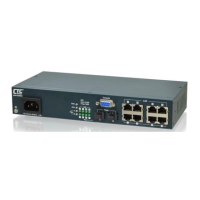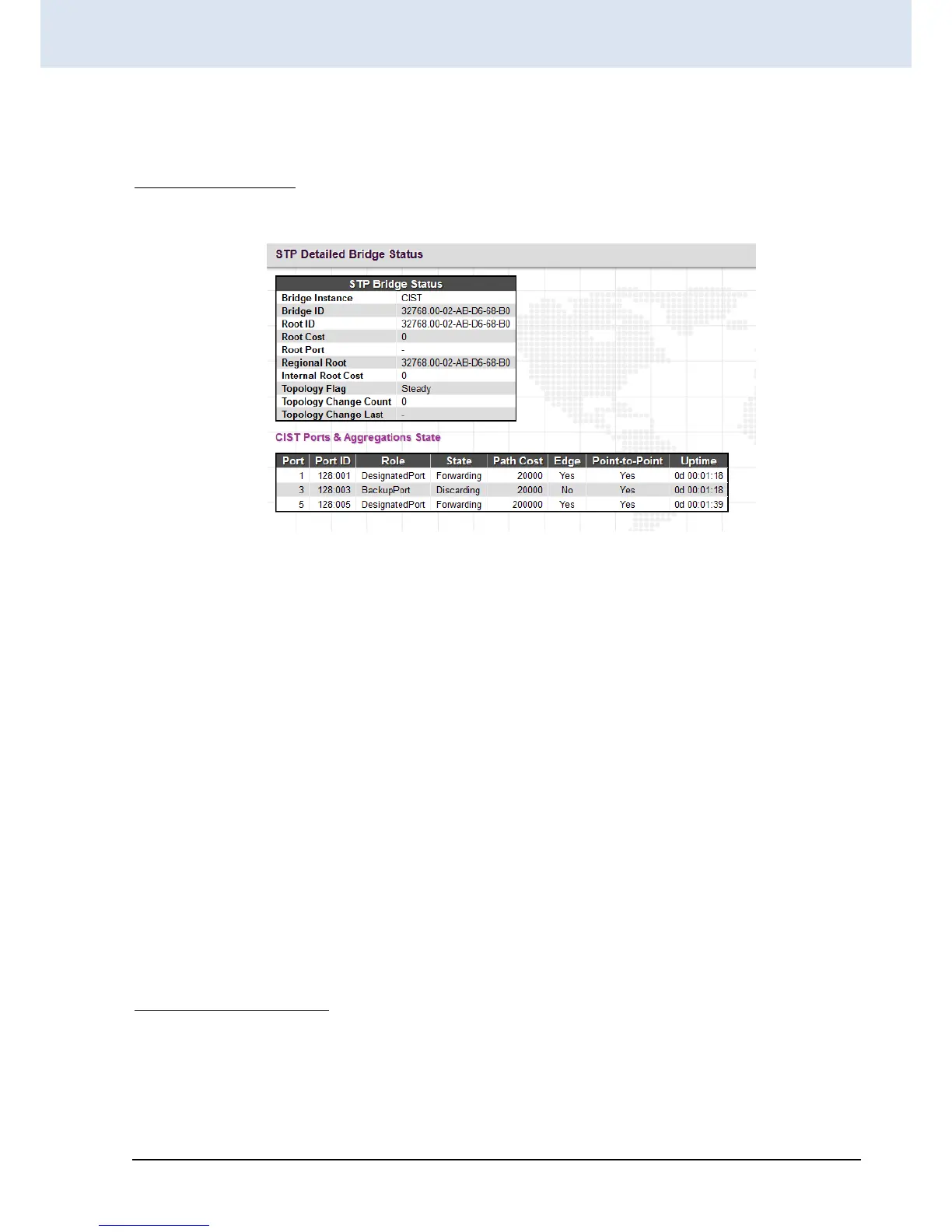Topology Flag: The current state of the Topology Change Notification flag for this bridge instance.
Topology Change Last: The time since this spanning tree was last configured.
STP Detailed Bridge Status
Click the MSTI instance to view STP detailed bridge status.
Bridge Instance: The bridge instance.
Bridge ID: The unique bridge ID for this instance consisting a priority value and MAC address of the bridge switch.
Root ID: Display the root device’s priority value and MAC address.
Root Cost: The path cost from the root port on the switch to the root device. For the root bridge this is zero. For all other
bridges, it is the sum of the port path costs on the least cost path to the root bridge.
Root Port: The number of the port on this switch that is closest to the root. This switch communicates with the root
device through this port. If there is no root port, then this switch has been accepted as the root device of the Spanning
Tree network.
Regional Root: The Bridge ID of the currently elected regional root bridge, inside the MSTP region of this bridge. (This
parameter only applies to the CIST instance.)
Internal Root Cost: The Regional Root Path Cost. For the Regional Root Bridge the cost is zero. For all other CIST instances
in the same MSTP region, it is the sum of the Internal Port Path Costs on the least cost path to the Internal Root Bridge.
(This parameter only applies to the CIST instance.)
Topology Flag: The current state of the Topology Change Notification flag for this bridge instance.
Topology Change Last: The time since this spanning tree was last configured.
CIST Ports & Aggregations State
Port: Display the port number.
Port ID: The port identifier used by the RSTP protocol. This port ID contains the priority and the port number.
Role: The role assigned by Spanning Tree Algorithm. Roles can be “Designated Port”, “Backup Port”, “Root Port”.
State: Display the current state of a port.

